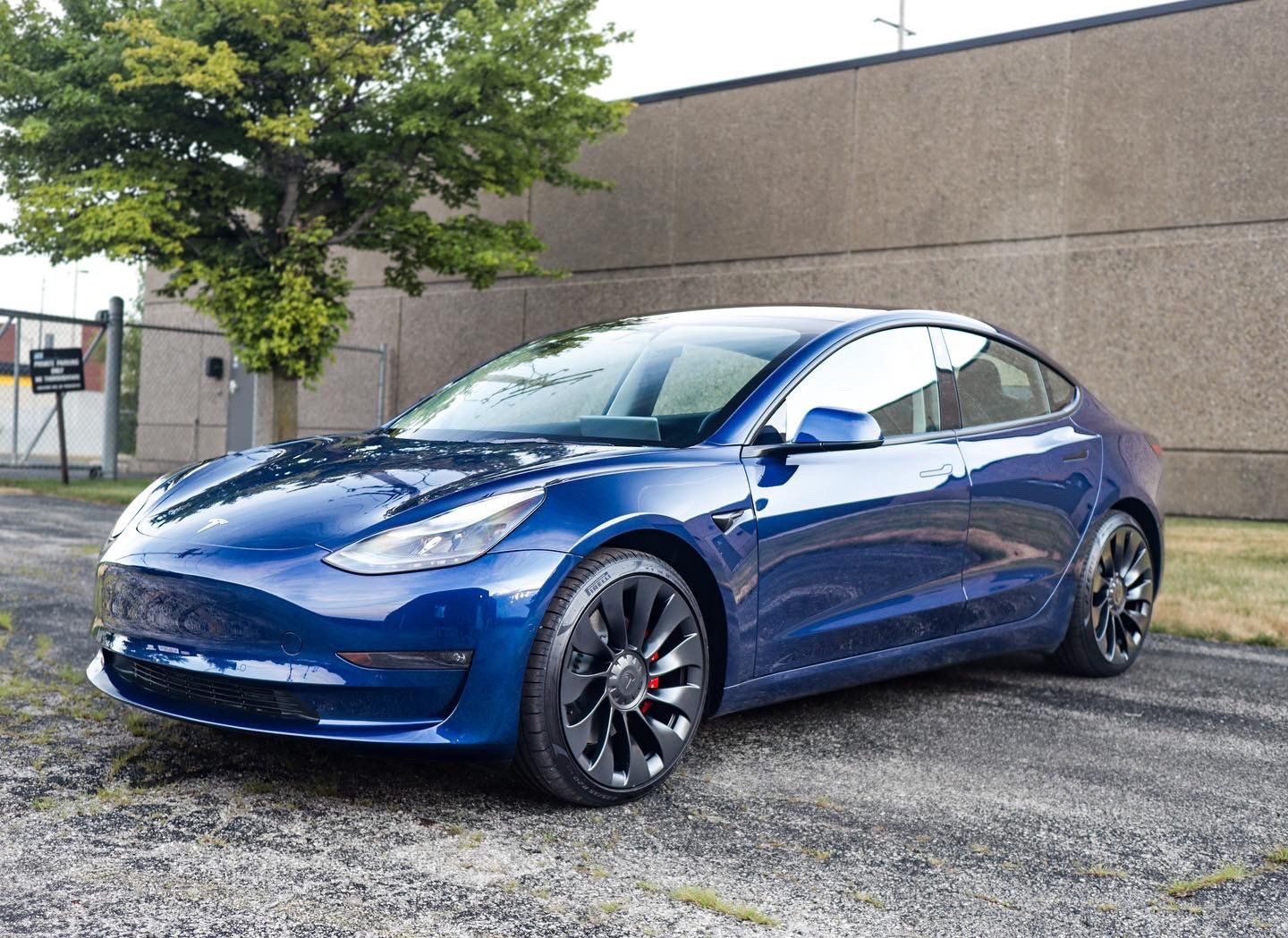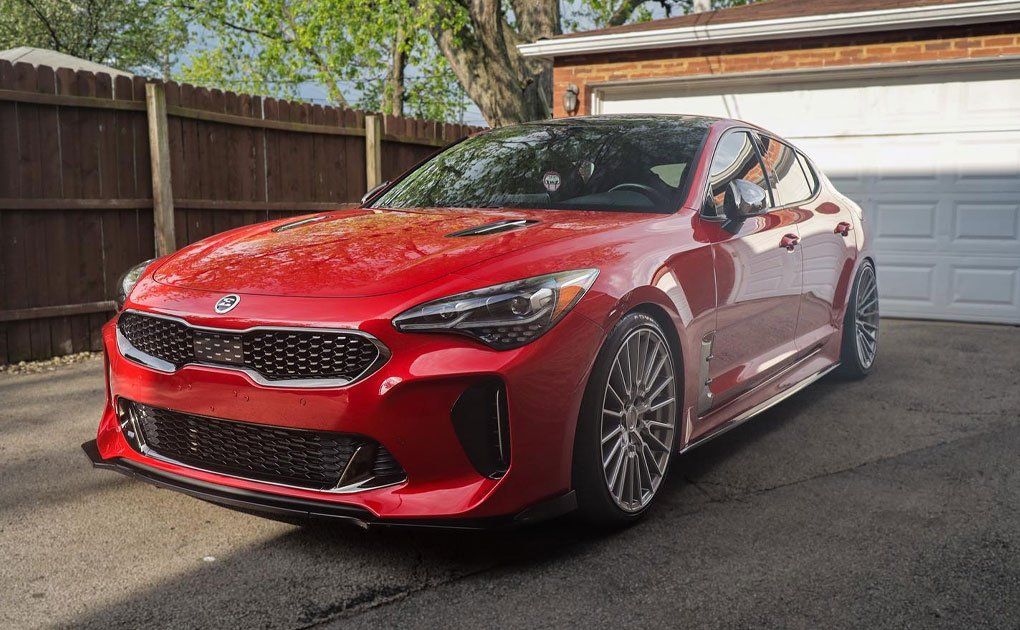Ideal Conditions for Applying Ceramic Coating: Temperature and Weather Tips
CALL (708) 574-8496
GET A FREE ESTIMATEWhen it comes to protecting your vehicle, a ceramic coating acts like a protective shield against dirt, UV rays, and other environmental hazards. However, before you grab your tools and start applying, it's essential to understand that the success of this protective layer depends heavily on one crucial factor: weather conditions. You might think any day is suitable for coating your car, but temperature and humidity conditions are critical for achieving that flawless, long-lasting finish.
Perfect Weather for Ceramic Coating
The ideal weather for applying ceramic coatings requires a careful balance between temperature and humidity. When temperatures fall between 50°F and 80°F (10°C to 27°C), the environment supports effective curing of the coating without introducing complications that can arise in extreme conditions. This temperature range is warm enough to allow proper bonding, yet not so hot that it causes premature drying or application difficulties. Monitoring humidity levels is equally important. Humidity above 70% can significantly extend drying time, potentially leading to imperfections such as water spots or uneven curing. Conversely, a relatively dry day with humidity between 40-60% supports proper adherence and ensures thorough drying between each application step. Spring and fall typically offer the best weather conditions for ceramic coating applications. During these seasons, you're likely to experience milder temperatures and lower humidity levels that create optimal working conditions. These transitional seasons provide the stable environmental conditions necessary for professional results.
The Critical Role of Temperature and Humidity
Temperature Considerations
Temperature is more than just a comfort factor—it can make or break your ceramic coating application. The sweet spot for application falls between 60°F and 80°F (15°C to 27°C). Below 50°F (10°C), the coating struggles to bond properly with the surface, similar to trying to apply adhesive in cold conditions where materials don't stick effectively. Conversely, temperatures above 90°F (32°C) may lead to rapid drying before the coating has adequate time to level and adhere properly. This can result in an uneven finish with visible streaks or patches. Always ensure surfaces are at least 5°F above the dew point to prevent condensation, which can disrupt adhesion during application.
Humidity Management
Humidity plays an equally crucial role in ensuring your ceramic coating adheres properly. Optimal relative humidity levels range between 40% and 60%. When humidity exceeds 70%, condensation can form on the surface, creating a barrier that interrupts proper bonding between the coating and your vehicle's paint. On the other hand, if humidity drops too low—below 30%—it speeds up evaporation rates excessively. While quick drying might sound appealing, it prevents the coating from flowing and self-leveling correctly, resulting in an inferior finish that lacks the smooth, glossy appearance you desire.
Surface Preparation: The Foundation of Success
Proper surface preparation is crucial for ceramic coating success and involves several important steps that ensure optimal adhesion and longevity.
- Thorough Washing: Begin with a comprehensive wash using pH-neutral car shampoo specifically designed to clean without stripping existing protective layers. This removes surface dirt, grime, and any remnants of previous wax or sealants that could interfere with coating adhesion. Work from top to bottom using a soft microfiber mitt, rinsing frequently to avoid recontaminating clean areas.
- Clay Bar Treatment: The clay bar treatment removes embedded contaminants that regular washing cannot eliminate, such as tree sap, road tar, and industrial fallout. Lubricate small sections with clay bar lubricant and gently glide the clay across the surface until it moves smoothly, indicating all contaminants have been removed. This step creates the ultra-smooth surface necessary for optimal coating bonding.
- Paint Correction: If your vehicle's paint has scratches, swirl marks, or other imperfections, address these issues before coating application. Use appropriate polishing compounds and techniques to restore the paint to its best possible condition. A flawless paint surface ensures the ceramic coating can bond uniformly and provide maximum protection and gloss enhancement.
Creating Ideal Indoor Environments
Applying ceramic coating indoors offers superior control over environmental factors that significantly impact application success. An ideal indoor workspace maintains temperatures between 60°F and 80°F (15°C to 27°C) with relative humidity levels between 40% and 70%.
- Climate Control: Use space heaters to warm cold garages during winter months, ensuring consistent temperatures throughout the application process. Dehumidifiers help manage moisture levels, which is particularly important in humid climates or during wet seasons. Regular monitoring ensures surfaces remain above the dew point, preventing moisture-related adhesion problems.
- Contamination Prevention: A closed garage or dedicated workspace minimizes dust, pollen, and other airborne contaminants that can settle on freshly applied coatings. This controlled environment allows you to focus on achieving professional results without external interference. Ensure adequate ventilation while maintaining temperature and humidity control for both safety and optimal application conditions.
Timing Your Application
Seasonal Considerations
Late fall and early winter often provide ideal conditions for ceramic coating application in most regions. During these months, temperatures are moderate, humidity levels are typically lower, and there's less risk of sudden weather changes that could disrupt the curing process. Avoid applying coatings during extreme weather periods. Summer's intense heat can cause rapid drying and application difficulties, while winter's cold temperatures slow curing times significantly. Spring can be unpredictable with sudden rain showers and temperature fluctuations that may compromise results.
Weather Monitoring
Always check weather forecasts before beginning your coating project. Avoid application when rain is predicted within 24-48 hours, as moisture can disrupt the curing process and compromise coating integrity. Similarly, avoid extremely windy days when dust and debris are more likely to contaminate your work surface.
Application Best Practices
When applying ceramic coatings, technique matters significantly for achieving optimal results. Apply ceramic coatings in thin, even layers to avoid streaking and ensure proper bonding. Thick applications can lead to uneven curing and may result in high spots or streaks that detract from the final appearance. Work in manageable sections, typically 2x2 foot areas, to maintain control over the application process. Curing time is equally critical to the success of ceramic coating application. Allow adequate curing time after application—typically 24-48 hours depending on environmental conditions. During this critical period, protect the vehicle from moisture, extreme temperatures, and contaminants.
The coating develops its full protective properties during this time, so patience is essential for optimal results. Following manufacturer guidelines is essential for proper ceramic coating performance. Each ceramic coating product has specific application requirements regarding temperature, humidity, curing time, and technique. Strictly following these guidelines ensures optimal performance and longevity. Deviating from recommended procedures can compromise the coating's protective properties and durability.
Seasonal Adaptation Strategies
When applying ceramic coatings during winter, cold weather slows the curing process significantly and can potentially lead to inconsistent results. To address this challenge, use heated workspaces to maintain proper temperatures throughout both the application and initial curing phases. It's also advisable to consider applying coatings before winter arrives to provide protection against road salt and harsh weather conditions. Summer presents its own set of challenges, as high temperatures can cause premature drying and create application difficulties. To work around these issues, schedule applications during the cooler parts of the day, such as early morning or late evening, when temperatures are more manageable.
Additionally, avoid direct sunlight during application, as this can cause the coating to flash dry before proper leveling occurs. Spring and fall offer distinct advantages for ceramic coating application, as these transitional seasons typically provide the most consistent conditions. However, it's important to remain vigilant about sudden weather changes and always verify that conditions are suitable before beginning work. These seasons often provide the longest windows of ideal conditions for both application and curing processes.
Maintaining Your Investment
After successful application and curing, maintain your ceramic coating with regular washing using pH-neutral soap. This removes contaminants while preserving the coating's integrity and performance. Proper maintenance ensures your investment continues protecting your vehicle's paint while maintaining its enhanced gloss and appearance. Understanding and respecting environmental conditions during ceramic coating application is essential for achieving professional results. By carefully monitoring temperature and humidity, preparing surfaces properly, and timing your application correctly, you'll achieve a durable, beautiful finish that protects your vehicle for years to come. Remember that patience and attention to detail during the application process pay dividends in the long-term performance and appearance of your ceramic coating.
Expert Ceramic Coating Services in Carol Stream, IL
Our ceramic coating services are crafted to provide your vehicle with long-lasting shine and superior defense against the elements. Designed to repel dirt, water, and environmental contaminants, our coatings keep your car cleaner for longer while enhancing its depth of color and gloss. Perfect for drivers in Carol Stream who want both beauty and durability, ceramic coatings make maintaining your vehicle easier and more rewarding. Give your car the protection it deserves—contact DAndrea Detail | PPF • Ceramic Coating • Window Tint today to schedule your ceramic coating service!





